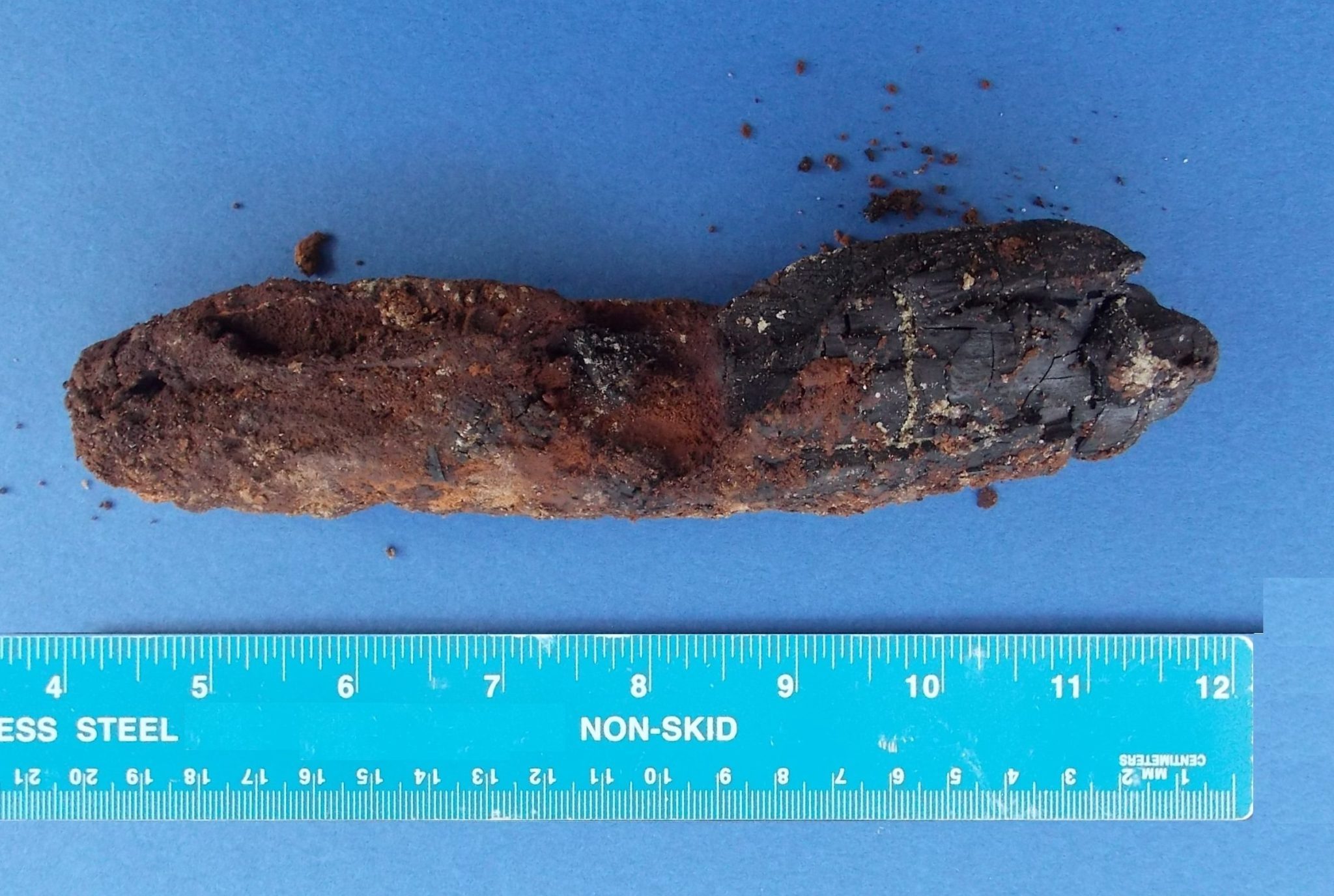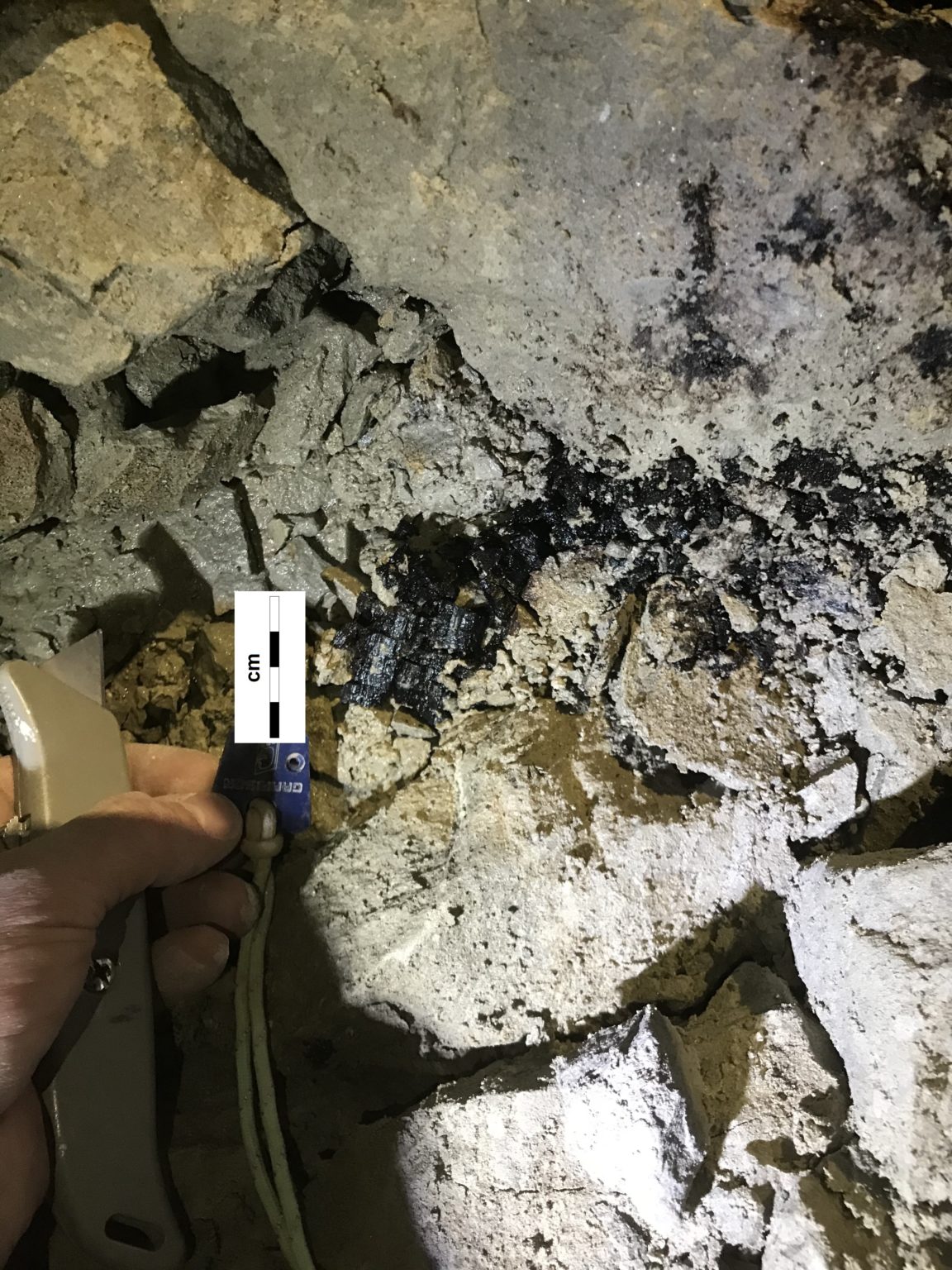
In January 2018, we reported that the Wealden Cave and Mine Society had been awarded the opportunity to get free radiocarbon dating work performed on archaeological samples from the Reigate area.
By the end of March, the results were available, but disappointingly, two of the three samples submitted did not contain sufficient carbon to provide a meaningful result. This meant that it was not possible to determine a date for a bone recovered from a Roman tile kiln, currently being reassembled in the Reigate Caves, nor for a much decayed leather item, believed to be a harness of some sort, recovered from the old stone quarries near Chaldon, suspected as being medieval in origin. The one sample that gave a positive result is a partly charred stick, apparently used as a torch and found at a spot underground that would originally have been relatively close to an entrance to the underground quarry, but which has been sealed for centuries.
To mitigate the disappointment, a further sample was requested to replace the subject of the failed analysis from Chaldon, and a visit was made to the same location from which the harness material was recovered, to search for another suitable sample to send away. Half buried in quarry waste, charred fragments of a piece of wood were carefully recorded and removed. The location was, until recently, completely sealed off by quarry waste from later workings and roof collapse. These fragments were dried out and sent off for dating. This time, a result was achieved, and the details are now available.

Calibrated dates for the torch – 1517-1595 AD or 1618-1640 AD
Calibrated dates for the charred oak fragments – 1495-1528 AD or 1552-1602 AD or 1615-1633 AD
Because no tobacco clay pipes have ever been discovered in the area of the quarry from which these samples were taken, it is more likely that the earlier date ranges are correct, suggesting that the two locations, in fairly close proximity, were sealed off from the rest of the quarry during the sixteenth century. Whether some parts of the accessible Chaldon quarries do indeed date from the medieval era requires further investigation. Chaldon is recorded as one of the sources of Reigate stone for Westminster Palace in 1259, and for Windsor Castle in 1351, so the search continues.
The radiocarbon work was facilitated by the Community Archaeology Radiocarbon Dating (CARD) Fund, and the work was carried out by the Scottish Universities Environmental Research Centre.
Correspondent: Peter Burgess
